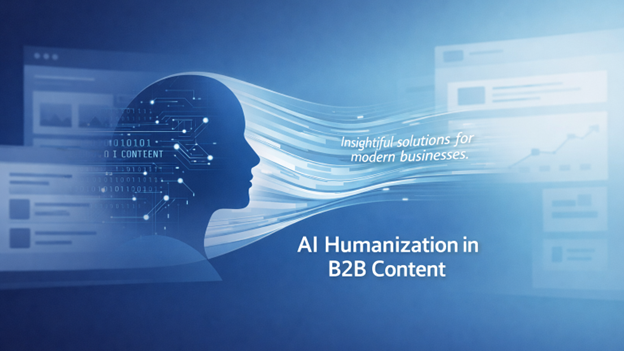Boost Lead Capture with AI
The traditional lead capture form is a relic of the past. It is static and impersonal, often making users abandon the form with frustration. But, now artificial intelligence breathes new life into these forms. It has transformed them into dynamic tools that personalize the user experience, identify high-value leads, and reduce complexity.
In this article, I'll explain the process of using AI to revolutionize your form optimization strategy.

How to Develop Your Lead Capture Forms With AI
AI injects intelligence into your forms, making them super capable of generating dynamic leads. Here's how specific AI functionalities can upgrade your forms across various aspects:
a. Optimize Form Content & CTAs
AI SEO programs for high-performing forms offer various helpful features. They begin with competitor analysis, examining competitor forms to identify their strengths and weaknesses. Based on this analysis, they suggest improvements like clearer labels, better layouts, and more concise questions.
For search optimization, one of the best AI SEO tools, Post Cheetah can analyze form content for relevant keywords and suggest ways to incorporate them into titles, descriptions, and the forms themselves. It also optimizes meta descriptions to enhance click-through rates from search results.
b. Auto-fill Forms with Existing Data
Won't you be happy when you visit a website or online store and find a form already filled with your name and email? Artificial intelligence enables this seamless experience. AI integrates your forms with your CRM system or website analytics, and if a customer returns to your site, it automatically populates their information.
We can all agree that less effort leads to higher form completion rates. Pre-filled forms reduce the effort required from users, minimizing frustration and the chance of form abandonment. This shows respect for users' time and data.
c. Adjust Forms Based on User Behavior
Old forms used to have many static fields, but now AI has revolutionized the way forms work by adding conditional logic that allows them to adapt in real-time. AI tracks user interactions, such as selections from drop-down menus or checkboxes, and adjusts the form accordingly. For instance, if a user selects “Enterprise”, additional fields for large organizations will appear.
But, when they select “Small Business”, those fields will disappear. Dynamic forms increase relevance by showing customers only the fields that matter to them, which makes the form more focused. By hiding unnecessary fields, the form becomes shorter and less daunting. This user-friendly approach improves conversion rates, as more users are likely to complete the form, turning them into valuable leads.
d. Offer Personalized Recommendations
Personalization goes beyond just pre-filling data. It's about creating a dynamic experience for each user. For this, advanced computing algorithms analyze user data, such as past purchases and browsing history, to understand individual preferences. Then, it suggests relevant products or services directly within the form.
As an example, if a user reads an article about organic search marketing on your site, the form might recommend a free trial of your SEO tools. These personalized suggestions capture user interest, leading to more engagement.
By offering targeted benefits, the likelihood of users becoming paying customers is higher, resulting in higher conversion rates. Additionally, understanding user needs builds trust, which leads to long-term relationships.
e. Make Smart Error Messages
Traditional error messages can often be confusing and annoying, but artificial intelligence changes this by offering clear and helpful guidance. Context-specific error messages can replace generic ones like “Invalid Input”. AI can adjust messages to the user's specific mistake. Such as if someone enters an email incorrectly, rather than saying “Please enter a valid email address”, advanced algorithms might suggest, “Looks like there's a missing ‘@’ symbol in your email address. Please check and try again”.
AI also uses user-friendly language to make it easier for consumers to understand and fix problems quickly. Machine learning can proactively prevent errors by anticipating potential mistakes based on user input patterns. It can display warnings or suggest alternatives before customers make a mistake.
f. Analyze Responses and Assign Scores
Artificial intelligence automatically evaluates each lead based on their possibility for conversion. By analyzing form responses against criteria like industry, budget, and buying stage, AI assigns a score to each user that reflects the likelihood of them becoming a paying customer. This process allows sales teams to focus on the most promising clients. Resources are directed toward high-scoring leads, maximizing return on investment. Also, the machines remove human bias from lead qualification, so that decisions are made based on objective data.
Lead qualification is essential for identifying promising leads while filtering out less suitable ones. AI plays a crucial role in this process by analyzing form data to detect fake or unqualified leads through several methods. Complex computing algorithms identify inconsistent information by detecting discrepancies such as mismatched details between a company name and email domain. Also, AI flags invalid contact details, including incorrect or non-existent emails and phone numbers. It monitors for suspicious activities, such as multiple similar submissions.
The benefits of employing AI-driven lead qualification are substantial. It saves time and resources by preventing wasted sales efforts on poor leads, improves data quality by ensuring your database contains accurate information, and protects your brand by eliminating false leads.
g. Create Conversational Forms and Chatbots
Conversational forms and AI-powered chatbots are revolutionizing regular form interactions by transforming them into friendly discussions rather than filling out boring queries. These innovations enhance user engagement and significantly boost lead capture rates. Using Natural Language Processing (NLP), AI understands user intent, enabling responses in natural language similar to chatting with a friend. Through a dialogue-driven approach, artificial intelligence guides users step-by-step and crafts subsequent questions based on previous answers.
The interface looks like a chat environment, which users find friendly and intuitive. These forms increase user engagement by creating a natural and interactive experience. They also dynamically qualify leads in real-time, while ensuring 24/7 availability as virtual assistants.
They are always ready to capture leads and provide assistance whenever needed. Practical applications include using conversational bots for lead capture on landing pages, where they assist users in gathering relevant information. They excel in customer support by answering FAQs, troubleshooting issues, and obtaining valuable feedback.
Conclusion
As you can see, AI has become a game-changer for lead capture forms. By leveraging its capabilities, you can transform your static forms into intelligent lead-generation machines that increase lead capture rates, reduce form abandonment rates, improve data quality, enhance user experience, and qualify leads better. So, integrate artificial intelligence into your forms today and generate high-quality leads to propel your business forward.






